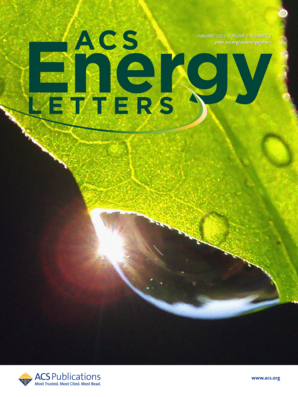拟南芥中的PWO通过调节染色质结构抑制基因转录
IF 19.3
1区 材料科学
Q1 CHEMISTRY, PHYSICAL
引用次数: 0
摘要
PWWP-DOMAIN INTERACTOR OF POLYCOMBS(PWO)家族蛋白在调控植物发育方面发挥着重要作用。然而,PWOs 如何调控染色质结构的分子机制尚不清楚。我们的数据显示,PWO1的结合位点富含正修饰,但不包括H3K27me3。此外,PWO1还与富含H3K27me3的分区域(H3K27me3-CD)边界区域结合,并起到维持边界强度的作用。同时,我们发现PWOs和多聚胞抑制复合体2(PRC2)在维持H3K27me3-CDs结构方面具有平行功能。PWOs或PRC2的缺失会导致H3K27me3-CD强度降低、B区到A区的切换以及H3K27me3-CD远离核外围。此外,PWOs 和层粘蛋白样蛋白合作调节多种染色质结构,抑制 H3K27me3-CD 内的基因转录。我们的结论是,PWOs能维持H3K27me3-CDs的抑制状态,并调节其在细胞核中的空间位置。本文章由计算机程序翻译,如有差异,请以英文原文为准。
PWOs repress gene transcription by regulating chromatin structures in Arabidopsis
PWWP-DOMAIN INTERACTOR OF POLYCOMBS (PWO) family proteins play a vital role in regulating plant development. However, the molecular mechanisms of how PWOs regulate chromatin structure is elusive. Our data show that the PWO1 binding sites are enriched with positive modifications but exclusive with H3K27me3. Moreover, PWO1 binds to the H3K27me3-enriched compartment domain (H3K27me3-CD) boundary regions, and functions to maintain the boundary strength. Meanwhile, we found that PWOs and Polycomb repressive complex 2 (PRC2) function parallelly in maintaining H3K27me3-CDs’ structure. Loss of either PWOs or PRC2 leads to H3K27me3-CD strength reduction, B to A compartment switching as well as the H3K27me3-CD relocating away from the nuclear periphery. Additionally, PWOs and lamin-like proteins collaborate to regulate multiple chromatin structures to repress gene transcription within H3K27me3-CDs. We conclude that PWOs maintain H3K27me3-CDs’ repressive state and regulate their spatial position in the nucleus.
求助全文
通过发布文献求助,成功后即可免费获取论文全文。
去求助
来源期刊

ACS Energy Letters
Energy-Renewable Energy, Sustainability and the Environment
CiteScore
31.20
自引率
5.00%
发文量
469
审稿时长
1 months
期刊介绍:
ACS Energy Letters is a monthly journal that publishes papers reporting new scientific advances in energy research. The journal focuses on topics that are of interest to scientists working in the fundamental and applied sciences. Rapid publication is a central criterion for acceptance, and the journal is known for its quick publication times, with an average of 4-6 weeks from submission to web publication in As Soon As Publishable format.
ACS Energy Letters is ranked as the number one journal in the Web of Science Electrochemistry category. It also ranks within the top 10 journals for Physical Chemistry, Energy & Fuels, and Nanoscience & Nanotechnology.
The journal offers several types of articles, including Letters, Energy Express, Perspectives, Reviews, Editorials, Viewpoints and Energy Focus. Additionally, authors have the option to submit videos that summarize or support the information presented in a Perspective or Review article, which can be highlighted on the journal's website. ACS Energy Letters is abstracted and indexed in Chemical Abstracts Service/SciFinder, EBSCO-summon, PubMed, Web of Science, Scopus and Portico.
 求助内容:
求助内容: 应助结果提醒方式:
应助结果提醒方式:


